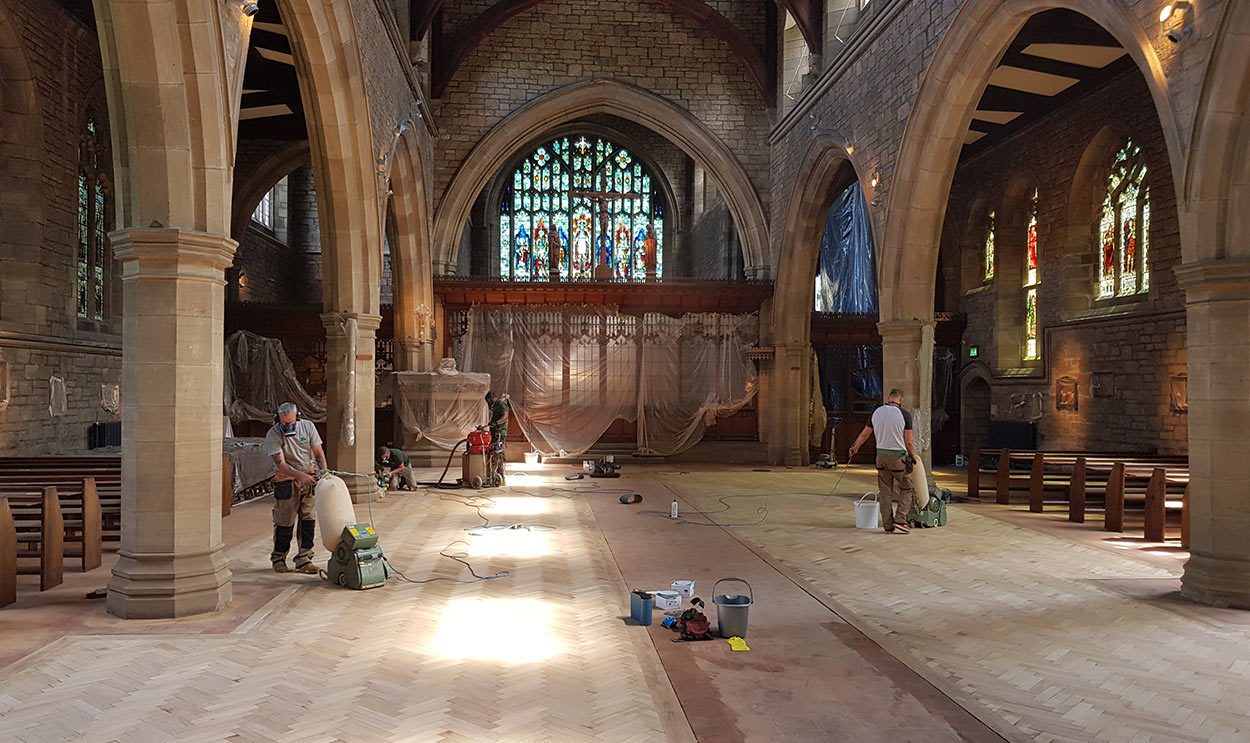St Margaret’ Church, Ilkley Case Study

We were asked by our client to inspect their original herringbone wood floor which had been laid back in the 1880’s but when it was originally laid, the subfloor had failed and the wood flooring had always been an issue because of this. Our task was to repair the subfloor but retain their existing herringbone flooring.
Our team of professional timber flooring experts attended site to carefully lift all the wood floor, block by block. Each block was painstakingly hand cleaned by removing the old bitumen adhesive from the underside and dirt & grit from the sides to ensure it could be re-laid again. The cleaned blocks were then stacked, in preparation for re-laying at a later stage.
Normally, when we remove a block floor such as this, we would take it away and work on it in our warehouses, then we would kiln-dry it to ensure it is fit for purpose but in this case, because the floor was being re-laid into the same environment, we decided to carry out this work on-site as we felt this would ensure that the continuity of relative humidity and the moisture content would be better maintained in the wood flooring, prior to it be re-laid.
Now the subfloor was exposed, we had to remove the original residual bitumen adhesive from the concrete subfloor, we did this by using a concrete scabble machine which take a small layer of the concrete off. Once we had a clean concrete subfloor to work with, we applied a PSRS (penetrating screed renovation system) over the entire surface which acts similar to a concrete enhancement system. In other words, we did not have to remove the old screed which would have caused lots of disruption logistically to this project as the PSRS system gave the existing concrete the compact resistance that is required.
Once the PSRS system was dried, we applied 2 x coats of latex smoothing compounds and sharp sand over the surface before re-bonding the salvaged blocks.
We were then able to re-lay the salvaged wood block flooring, re-laying it to a herringbone style with a twin block border, exactly as it had been many years previously, although this time, with a sound subfloor.
During this salvage operation and the many others that we have tackled over the years, we normally allow for losses of about 20% due to unusable blocks. So, we sourced the exact same reclaimed block to best match the existing flooring. We ensured these blocks were kiln dried and ready to fit into the existing flooring design seamlessly.
Now that the flooring was re-laid, exactly as it was intended in 1800’s, we then had to prepare the wood block surface by sanding and oiling using our highly skilled labour force and professional sanding equipment by Lagler and Festool. These machines are dust free and give a perfect finish to any timber floor when under the correct control and usage.
After finishing the surface to 120 grit smoothness (standard practice for timber flooring), we applied Bona Craft Oil professional floor surface finish. This gave the client the exact sheen level they desired and returned the floor back to its natural beauty as it was originally intended when it was first laid.
The end result being one of authenticity, originality and a floor that suits the overall period of the building, giving this lovely church an authentic look which is true to the period of the property.